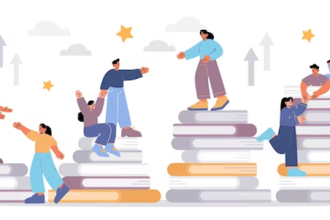The realm of education has expanded exponentially with the advent of e-learning. Thanks to the collective efforts of e-learning software developers, we now have plenty of tools that simplify the education process. They offer unprecedented access to knowledge and learning opportunities for individuals from all walks of life.
However, true progress lies in creating an inclusive environment where diverse learners can participate fully and benefit from these courses. Inclusive e-learning focuses on designing courses that cater to the needs of all learners, including those with disabilities or varying learning preferences. In this article, we discuss the significance of inclusive e-learning and provide insights into designing accessible courses that empower learners of diverse backgrounds.
Let’s dive right in!
Understanding Inclusive E-Learning
Inclusive e-learning revolves around the principle that education should be accessible and adaptable to the needs of every learner. It removes physical barriers and ensures that learners with disabilities, cognitive differences, or language challenges engage effectively with the course content. The goal is to foster an environment where every learner feels welcomed, valued, and empowered to achieve their full potential.
The Significance of Inclusive E-Learning
E-learning is crucial for a variety of reasons:
- Equal opportunities. Inclusive e-learning breaks down barriers that limit certain individuals’ access to education in traditional settings. By providing equal opportunities to all learners, regardless of their physical or cognitive abilities, e-learning becomes a powerful tool for promoting education for all.
- Fostering Diversity and Collaboration. When courses are designed with inclusivity in mind, they encourage a diverse group of learners to come together and collaborate. This diversity of perspectives enriches the learning experience and promotes understanding and empathy among learners.
- Enhancing Engagement. Inclusive course design employs a variety of multimedia elements and interactive tools, catering to different learning styles. As a result, learners are more engaged and motivated to actively participate in the learning process.
Designing Accessible Courses for Diverse Learner Needs
Now that you understand the importance of inclusive e-learning, the next question is how do you design courses that are accessible to everyone? Well, here are the characteristics of such courses:
- Adhering to Web Accessibility Standards. Incorporating web accessibility standards ensures that learners with disabilities can access content using assistive technologies. This includes providing alt-text for images, creating captions for videos, and ensuring keyboard navigation.
- Flexible Content Formats. Offering course content in multiple formats, such as text, audio, and video, allows learners to choose the format that best suits their preferences or needs. Transcripts for audio and video content also benefit learners with hearing impairments.
- Clear and Simple Language. Using plain and straightforward language makes the course content more accessible to learners with varying reading abilities or for whom the language is not their native tongue.
- Captioning and Translations. Providing captions for videos aids learners with hearing impairments, while translations of course materials accommodate learners whose first language may not be the language of instruction.
- Structured Learning Pathways. Organizing course content in a logical and sequential manner helps learners better comprehend and retain information. Clear navigation and progress tracking assist all learners, including those with cognitive challenges.
- Assessments and Feedback. Designing assessments that assess learners’ understanding effectively and offering personalized feedback fosters a supportive learning environment. This approach helps learners grasp the material and make progress at their own pace.
- User Testing and Feedback. Involving diverse learners in the course design and conducting user testing provides invaluable insights into potential barriers and areas for improvement.
Conclusion
Inclusive e-learning is a transformative approach that enriches the educational experience for learners of all backgrounds. By designing accessible courses, educators create an environment where every learner feels valued and empowered to succeed. Embracing the principles of inclusivity not only fosters diversity and collaboration but also enhances engagement and knowledge retention.
As technology continues to shape the future of education, it is crucial that e-learning platforms prioritize inclusivity and accessibility. By incorporating web accessibility standards, providing flexible content formats, and offering clear language and structured learning pathways, we ensure that e-learning truly becomes a platform that leaves no learner behind. Inclusive e-learning paves the way for a more equitable and diverse educational landscape, where every learner’s potential can flourish and thrive.















